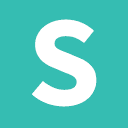
Overview: Bootstrap is one of the most popular CSS frameworks, originally developed by Twitter. It provides a comprehensive set of tools for building responsive and mobile-first websites.
Key Features:
- Grid System: A flexible 12-column grid system that adapts to different screen sizes.
- Components: Pre-styled components like buttons, cards, and modals.
- Customizable: Built-in support for Sass, allowing customization of themes and components.
- JavaScript Plugins: Includes a range of plugins for additional functionality such as modals, tooltips, and carousels.
Pros:
- Well-documented and widely supported.
- Consistent design and responsive layout out of the box.
- Large community and extensive resources.
Cons:
- Can lead to a “Bootstrap look” if not customized.
- Overhead from unused components can affect performance.
Overview: Foundation by ZURB is known for its flexibility and advanced features, targeting more complex and large-scale applications.
Key Features:
- Responsive Grid System: Offers more control with a flexible grid system and media queries.
- Interchange: A feature that allows you to load different content based on the viewport size.
- Accessibility: Focus on creating accessible and inclusive user experiences.
- Framework Flexibility: Ability to customize and create your own grid and components.
Pros:
- Strong emphasis on responsive design and accessibility.
- Highly customizable and modular.
- Comprehensive set of tools and components.
Cons:
- Steeper learning curve compared to other frameworks.
- Smaller community compared to Bootstrap.
Overview: Bulma is a modern CSS framework based on Flexbox, making it easier to design flexible and responsive layouts.
Key Features:
- Flexbox-Based: Utilizes Flexbox for layout, which simplifies alignment and spacing.
- Modular: Includes only the components you need, reducing bloat.
- Sass Variables: Customization through Sass variables for theme adjustments.
- Simple Syntax: Clean and easy-to-understand class names.
Pros:
- Lightweight and modular, which can lead to better performance.
- Flexbox-based, making complex layouts easier.
- No JavaScript dependencies, focusing solely on CSS.
Cons:
- Fewer built-in JavaScript components compared to Bootstrap.
- Smaller ecosystem and community.
Overview: Tailwind CSS is a utility-first framework that encourages a different approach to styling by using utility classes directly in HTML.
Key Features:
- Utility-First: Provides low-level utility classes for controlling every aspect of styling.
- Customization: Highly customizable through configuration files.
- Responsive Design: Built-in support for responsive design using utility classes.
- Component-Based: Can be used to build custom components with utility classes.
Pros:
- Highly flexible and allows for unique designs.
- Encourages consistency and reduces the need for custom CSS.
- Strong community support and extensive documentation.
Cons:
- Initial learning curve as it requires a different approach to styling.
- Can lead to verbose HTML with numerous utility classes.
Overview: Semantic UI aims to make development more intuitive by using human-friendly HTML and a natural language approach to naming conventions.
Key Features:
- Human-Friendly HTML: Uses intuitive class names that resemble natural language.
- Themeable: Provides various themes and customization options.
- Components and Elements: A rich set of UI components and elements with built-in variations.
- JavaScript Integration: Includes JavaScript behaviors and animations.
Pros:
- Intuitive and readable class names.
- Easy to use with extensive components and themes.
- Good documentation and support.
Cons:
- Larger file sizes due to comprehensive component library.
- Can lead to design inconsistencies if not carefully managed.
Overview: Materialize UI is based on Google’s Material Design principles, which aim for a unified and tactile design experience across different devices.
Key Features:
- Material Design: Implements Google's Material Design guidelines for a cohesive look and feel.
- Components: Includes a variety of components such as cards, modals, and tabs.
- Responsive Design: Built-in support for responsive layouts.
- Sass Support: Allows for customization using Sass.
Pros:
- Consistent and modern design aesthetic.
- Well-organized components and documentation.
- Good support for responsive design.
Cons:
- Can be restrictive if you want to deviate from Material Design principles.
- May have a steeper learning curve for those unfamiliar with Material Design.



